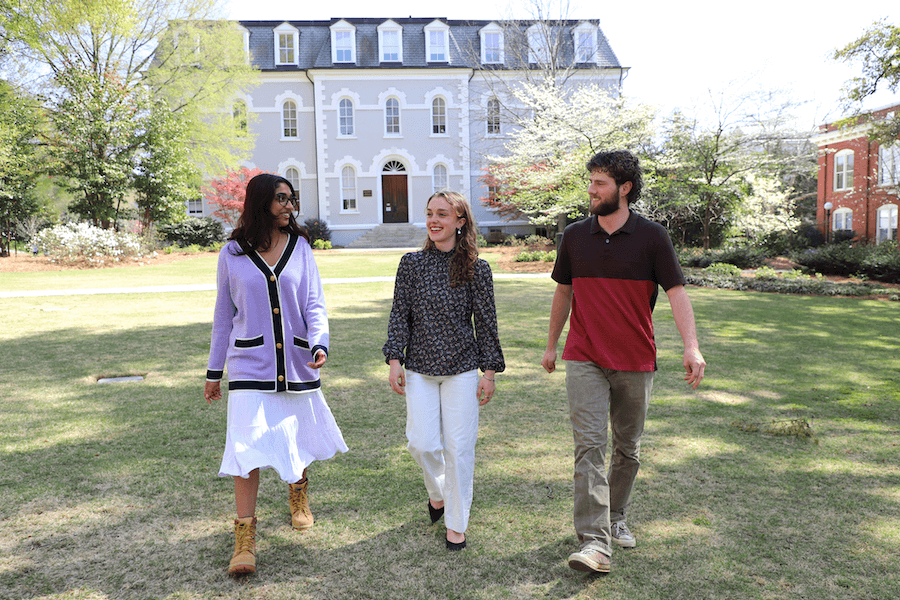By Wayne McLaurin
University of Georgia
Most lawn fertilizer is sold in bags that cover 5,000 square
feet, or a rectangle that’s 50 feet by 100 feet. But if your yard
isn’t 50-by-100, how do you know how much to use?
You need a ballpark figure of how many square feet each area has.
The best way to get that is with a map.
To map your yard, you’ll need something to write on, something to
write with and the longest tape measure you can find. A
well-rewarded assistant would be extremely helpful. This may be a
good time for the kids to see that math can be useful.
Make the map a rough sketch with measurements for each area. It’s
easiest to start at a fixed object: the house, a fence or a curb.
Move from one area to the next, showing the measurements of the
driveways, walkways, decks, buildings and fences as well as the
lawn and garden.
Make a map
Transfer the measurements to scale onto graph paper. Separate the
areas into approximate rectangles, triangles or circles. For
example, divide an “L” shaped lawn area into two rectangles and
add the calculated areas.
If your triangular area isn’t a 90-degree triangle, divide it
into two right triangles and add the calculated areas. For a
semicircular planting bed, figure the area of the full circle,
then divide by two.
The formula for the area of a rectangle is length times width.
The area of a circle is twice the radius (a line from the edge to
the center) times 3.14. The area of a right triangle is one-half
the base times the height. And you thought high school geometry
was useless.
Not rocket science
Break down an irregularly shaped area into a combination of
geometric shapes. Figure the area of each shape and add them
together. You may have to fudge a little. It isn’t rocket
science, but you do want a good estimate.
Take a copy of the map when you shop for lawn seed, fertilizer,
weed barriers and other items sold in quantities based on area.
(Add compass directions and a brief description of soil
conditions to your map and you’ll have a useful tool for choosing
plants, too, and designing your landscape.)
Many bright people have a hard time calculating volume, such as
figuring out how much mulch it will take to topdress a bed.
First figure the area. Then divide the area by 12 (the number of
inches in a foot) to find out how many cubic feet it will take
for 1 inch of mulch. Multiply that by however many inches of
mulch you want to add.
Use this formula to see how much topsoil you’ll need to fill a
raised bed, too.
Buying by the bag
Most gardeners buy soil amendments, compost and mulches by the
bag. Usually, these are measured in cubic feet. Some, however,
are listed in dry quarts, most commonly in a 20-quart bag, or
roughly three-fourths of a cubic foot. (There are about 25.75 dry
quarts in a cubic foot.)
Bags are the cleanest and most convenient way to transport this
kind of product. But it’s not the cheapest.
You can buy larger quantities loose by the cubic yard. There are
27 cubic feet to a cubic yard (length times width times depth, or
3 feet by 3 feet by 3 feet).
Bulk quantities
You can usually pick up a yard of compost, mulch or topsoil for
less than half the price of bagged products. It’s messy, and you
need a truck with an open bed.
Bulk quantities can be delivered, but there’s usually a
10-cubic-yard minimum. That’s a fairly stupendous quantity, the
equivalent of 270 cubic-foot bags.
Doing the math isn’t hard and will help you to be not only a
better gardener but a savvy shopper, too.
For more garden math and formulas, see publication, “Conversion
Tables, Formulas and Suggested Guidelines for Horticultural Use”
(
or
(Wayne McLaurin is a horticulturist with the University of
Georgia College of Agricultural and Environmental Sciences.)



